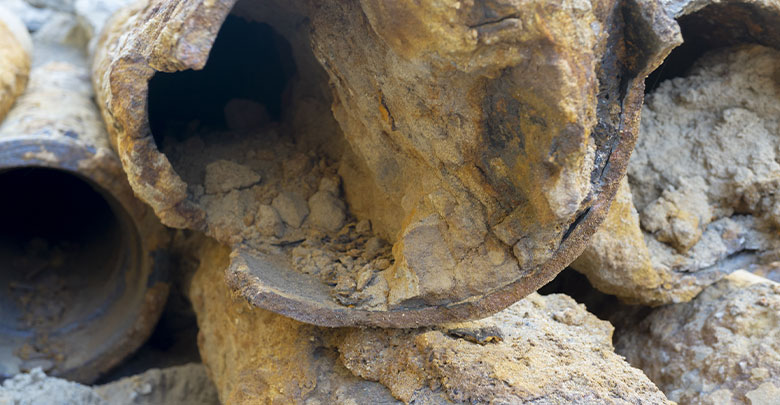Your Gut Microbiome & Insulin Resistance
Research continues to pinpoint a link between your overall health and the balance of “good” and “bad” bacteria in your gut

Insulin Resistance and Gut Bacteria
Research published in Nature Metabolism had 40 participants in their study. Their goal was to determine if the level and types of gut bacteria varied for people with and without diabetes.
- Half of the participants had already been diagnosed with type 2 diabetes.
- The other half did not have diabetes but showed evidence of insulin resistance.
- They took samples from their “abdominal fat deposits” and from their livers
Both of these areas play a critical role in your body’s ability to metabolize the food you eat and normally contain large numbers of bacteria.
They looked closely at which types of bacteria were most present in these tissue samples, hoping to find a “bacterial signature” that differentiated those already diagnosed with type 2 from those with still normal blood sugar levels.
And they did.
There was an identifiable difference in the types and amounts of bacteria in the tissue of those with diabetes compared to those without.
“Our findings suggest that in people suffering from severe obesity, bacteria or fragments of bacteria are associated with the development of type 2 diabetes,” explains Prof. André Marette, of Université Laval, Canada, the lead researcher and author of the study.
Leaky Gut Syndrome
Another concerning issue they identified was that bacteria normally found in the intestines were present in these tissue samples from the liver and fatty deposits.
This implies “leaky gut syndrome,” which is common in a person with obesity and is also linked to a slurry of other health conditions including arthritis, asthma, depression, and chronic fatigue syndrome.
Leaky gut syndrome has also been tied directly to a person’s diet — as the result of regular consumption of highly processed, low-quality foods.
In the study, Prof. Marette hypothesizes that the leaking of bacteria from the gut triggers an inflammatory process that significantly interferes with the effectiveness of insulin in managing your blood sugar levels.
Thus, creating insulin resistance.
“Our next objective is to determine if the bacteria found in the liver and fat deposits of people [living with] severe obesity are also present in those [with] overweight or moderately obese,” added Prof. Marette.
“We also want to see if certain pathogenic bacteria found in the tissues can trigger type 2 diabetes in an animal model,” he continued. “And lastly, we want to find out if certain beneficial bacteria found in these tissues can be used to prevent the development of the disease.”
Drug Effectiveness
Your gut bacteria may interfere with drug effectiveness, too.
Earlier research from 2018 is also looking at the effectiveness of your diabetes medications based on the balance of bacteria in your gut.
Type 2 diabetes treatments are intended to improve one or more of these factors: your body’s ability to produce insulin, your sensitivity to insulin, how your body absorbs carbohydrates, and how much glucose you pass through your urine.
But some diabetes drugs rely on a relationship with the bacteria in your gut, too. If the balance of “good” and “bad” bacteria in your gut is out of whack, a medication may not achieve its intended effect.
“For example, metformin, alters gut microbiome in rodents and humans, in a way that contrasts with high-fat diet (HFD) effects,” explains the study.
“Not only do anti-diabetic drugs influence the gut microbiome, but gut microbiome also influences the metabolism of drugs and xenobiotics, thereby affecting patients’ responses. Several orally-administered drugs and xenobiotics, before being absorbed in the bloodstream, are encountered/processed by intestinal microbial enzymes, and hence, the gut microbiome’s metabolic capacity could influence the absorption and function of these drugs by making them pharmacologically active, inactive or even toxic.”
In other words, when administered intravenously — which skips the digestive system and feeds directly into your bloodstream — the drugs are proving to be more effective than when administered orally. This leads researchers to believe the off-kilter bacteria in the gut are interfering with a medication’s ability to work, similar to the more recent research.
New Bacteria-based Treatments
If type 2 diabetes and insulin resistance can be prevented by improving the balance of bacteria in the gut and by preventing leaky gut syndrome, this will offer a new path for patients using “bacteria-based” treatments.
How to improve your gut bacteria
Eat Less Processed Foods
The first and simplest thing you can do to improve your gut bacteria is to improve what you eat and drink. Processed foods, alcohol, and even diet soda are all linked to gut issues and a negative balance of gut bacteria.
“In a 12-week mouse study, supplementing a high-fat diet with 10% fermentable flaxseed fiber dramatically increased butyrate production, energy expenditure, and [beneficial bacteria] Bifidobacterium and Akkermansia levels, while countering weight gain. In contrast to the Western diet, consuming daily servings of fiber, fruit, and vegetables promotes the alpha diversity of bacterial species in the gut.”
Reduce Alcohol Consumption
“In alcoholic liver disease, alcohol consumption causes gut permeability by reducing the expression of REG3, a bactericidal protein normally responsible for restricting the mucosal colonization of luminal bacteria,” explains 2019 research.
There is no question that what you eat and drink are the greatest contributors to the health and balance of your gut bacteria and overall intestinal health.
Take simple steps to gradually improve your diet and you’ll gradually improve your diabetes, too.





